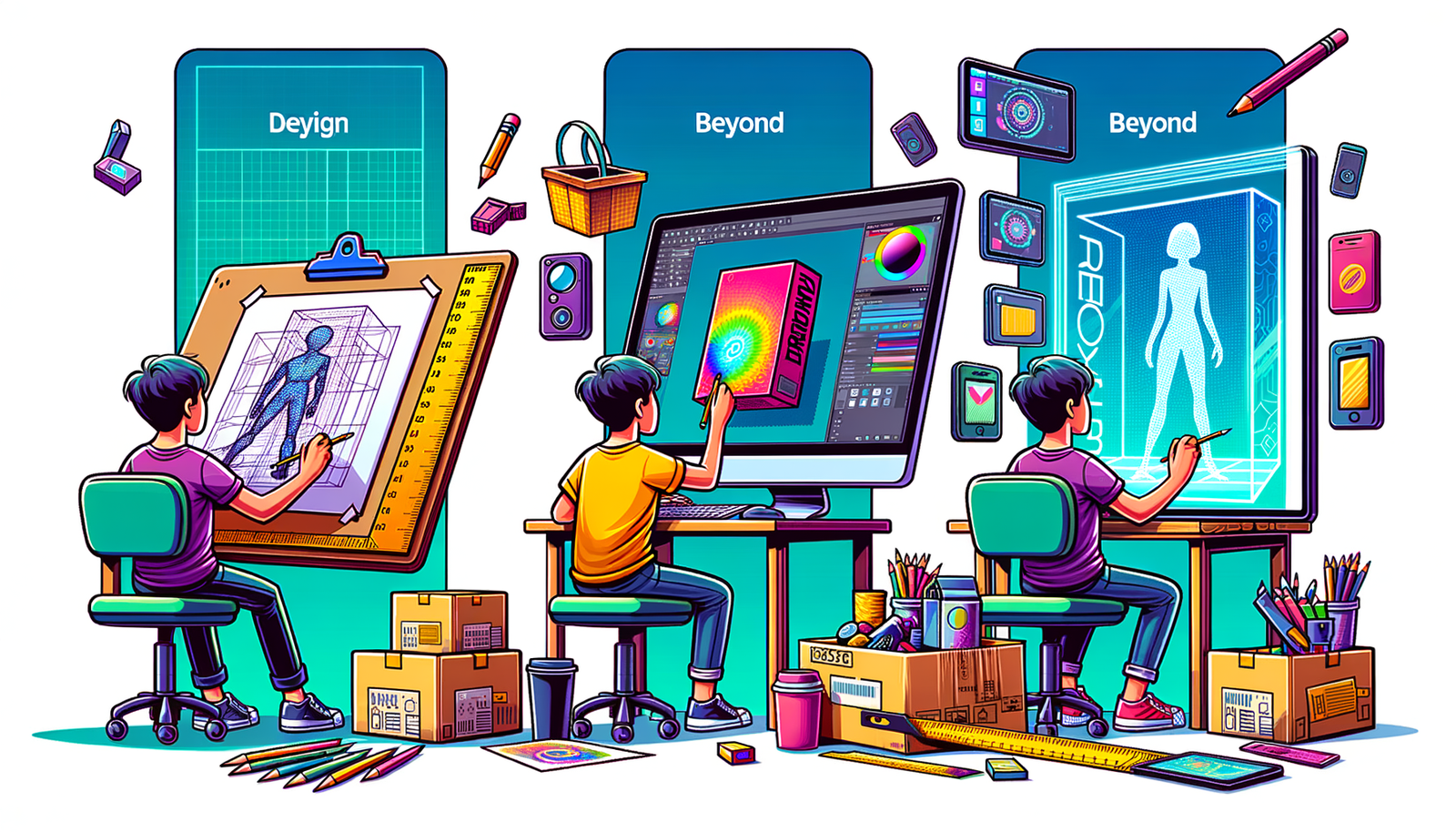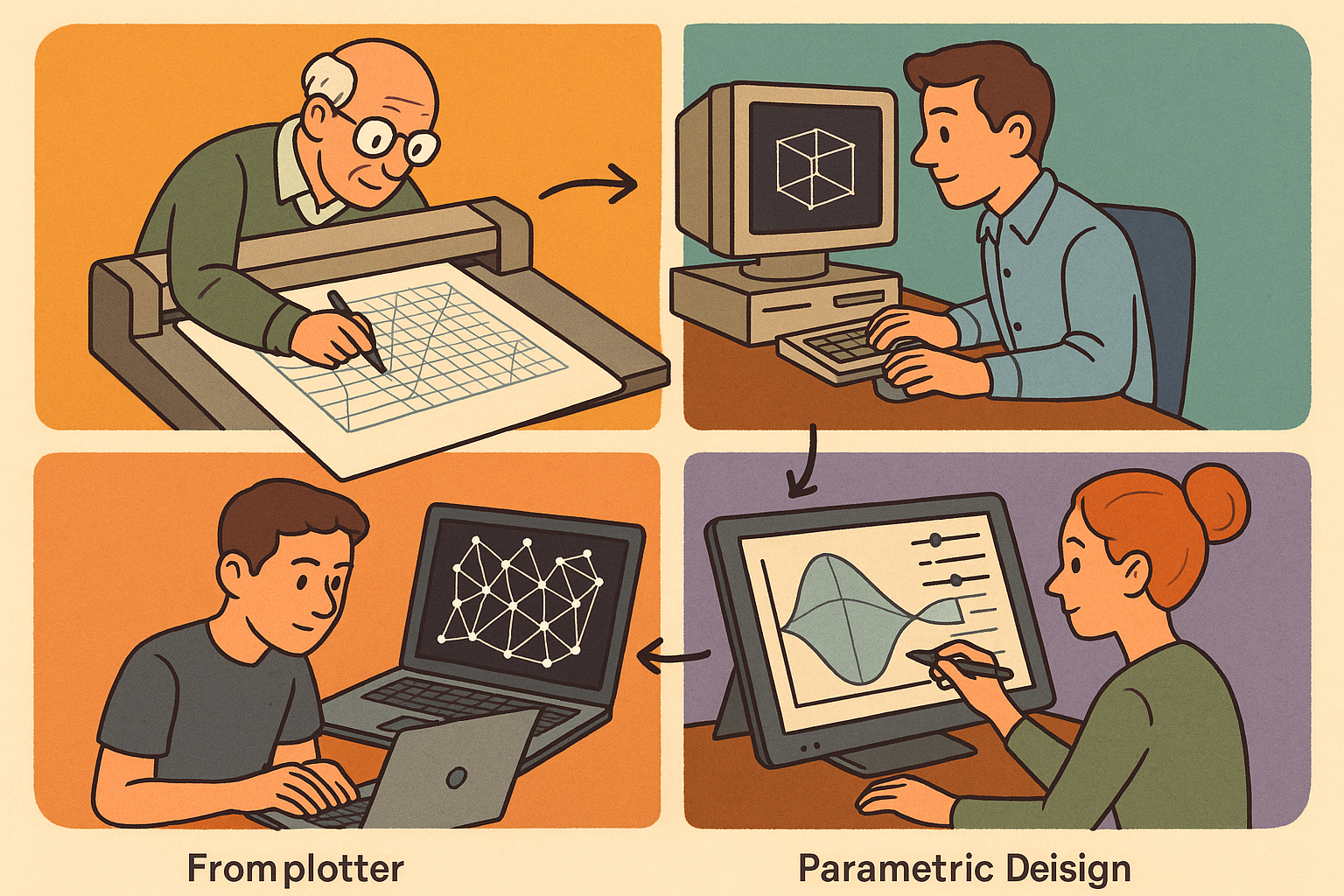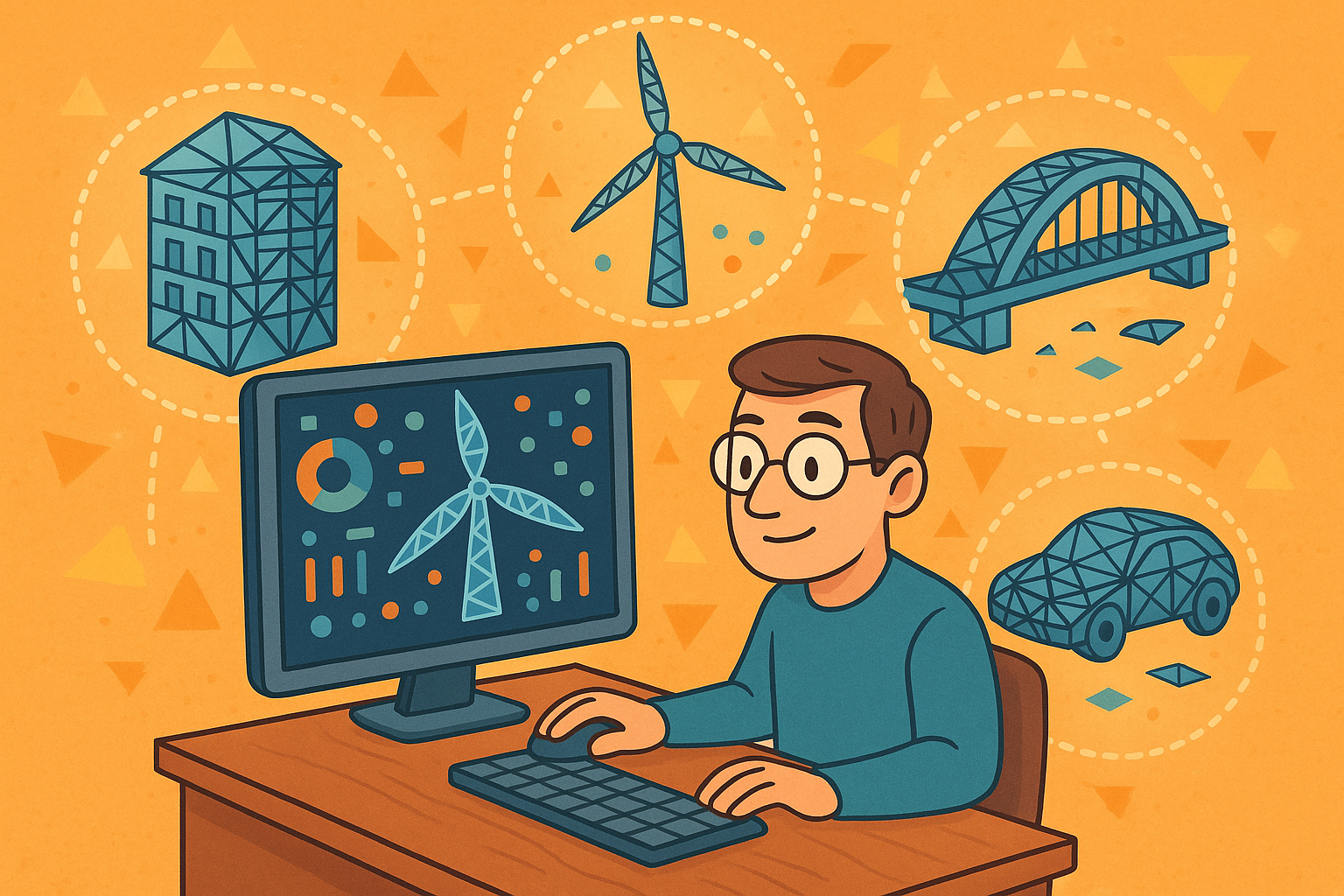Your Cart is Empty
Customer Testimonials
-
"Great customer service. The folks at Novedge were super helpful in navigating a somewhat complicated order including software upgrades and serial numbers in various stages of inactivity. They were friendly and helpful throughout the process.."
Ruben Ruckmark
"Quick & very helpful. We have been using Novedge for years and are very happy with their quick service when we need to make a purchase and excellent support resolving any issues."
Will Woodson
"Scott is the best. He reminds me about subscriptions dates, guides me in the correct direction for updates. He always responds promptly to me. He is literally the reason I continue to work with Novedge and will do so in the future."
Edward Mchugh
"Calvin Lok is “the man”. After my purchase of Sketchup 2021, he called me and provided step-by-step instructions to ease me through difficulties I was having with the setup of my new software."
Mike Borzage
Design Software History: Technological Milestones in Packaging Design Software: From Manual Drafting to 3D Modeling and Beyond
July 08, 2024 3 min read


Introduction
Packaging engineering is a crucial field that encompasses the design and creation of packaging for a variety of products. It plays a significant role in numerous industries, including consumer goods, pharmaceuticals, and food and beverage. Effective packaging ensures product protection, facilitates marketing efforts, and increasingly contributes to sustainability.
In the modern era, design software has become indispensable in packaging engineering. These tools have revolutionized the way packaging is conceptualized, designed, tested, and produced. This article delves into the historical evolution of packaging design software, explores core technologies and processes, and examines the industry's impact and potential future trends.
Evolution of Packaging Design Software
The early days of packaging design relied heavily on manual drafting. Engineers and designers used pencils, rulers, and paper to create detailed drawings of packaging concepts. This process was labor-intensive and prone to errors, which often led to inefficiencies and delays in bringing products to market.
The introduction of initial software applications marked a significant turning point. Early computer-aided design (CAD) tools began to replace manual drafting, offering more precision and flexibility. However, these early applications were still limited in their capabilities, often restricted to 2D design.
A major milestone in the evolution of packaging design software was the introduction of AutoCAD by Autodesk in 1982. AutoCAD became a game-changer by providing robust 2D and later 3D design capabilities. It enabled packaging engineers to create detailed and accurate designs more efficiently, significantly reducing the time required for design iterations and modifications.
As technology advanced, so did the sophistication of design software. The development of 3D modeling tools such as SolidWorks by Dassault Systèmes transformed packaging design further. SolidWorks, introduced in 1995, offered powerful features for creating complex three-dimensional models. This allowed packaging engineers to visualize their designs in a more realistic and detailed manner, facilitating better decision-making and innovation.
Core Technologies and Processes
At the heart of modern packaging design lies the importance of precise geometric and solid modeling. These techniques are essential for creating accurate and functional packaging designs. Key software tools like AutoCAD, SolidWorks, and Rhino have become indispensable in this regard.
Geometric modeling involves the creation of mathematical representations of shapes. This allows designers to define the exact dimensions and properties of packaging components. Solid modeling, a subset of geometric modeling, focuses on representing three-dimensional objects with volume and mass properties. These models provide a comprehensive understanding of how the packaging will look and function in the real world.
Simulation and Finite Element Analysis (FEA) play a crucial role in testing and validating packaging designs. FEA allows engineers to analyze the structural integrity and performance of packaging under various conditions. Using software solutions like ANSYS, packaging engineers can simulate stress, strain, and other physical forces to ensure the durability and reliability of their designs.
The application of FEA in packaging design helps in identifying potential weaknesses and optimizing materials and structures. This not only enhances product safety but also reduces the risk of costly failures during production and distribution.
Industry Impact and Future Trends
One of the most significant advancements in packaging design has been the advent of additive manufacturing and rapid prototyping. 3D printing technology has revolutionized the creation of packaging prototypes. It allows designers to quickly produce physical models of their designs, enabling rapid testing and iteration.
The use of 3D printing in packaging has brought several benefits:
- Faster turnaround times for prototype development
- Reduced costs associated with traditional prototyping methods
- Greater flexibility in exploring innovative design concepts
Sustainability has also become a driving force in packaging design. The role of design software in developing sustainable packaging solutions cannot be overstated. Modern software tools aid in material reduction, optimizing packaging designs to use fewer resources while maintaining functionality and durability.
Examples of software contributing to eco-friendly packaging include tools that facilitate the use of recyclable materials and design for disassembly. These features help companies meet regulatory requirements and consumer demand for environmentally responsible products.
Conclusion
In summary, the historical evolution of packaging design software has been marked by significant milestones, from the manual drafting era to the sophisticated 3D modeling and simulation tools we have today. These technological advancements have had a profound impact on the packaging industry, enhancing design accuracy, efficiency, and innovation.
Looking to the future, we can expect continued innovations in packaging design software. Emerging technologies such as artificial intelligence and machine learning hold the potential to further streamline design processes and optimize packaging solutions. As packaging challenges evolve, the importance of design software in addressing these challenges will only grow.
Also in Design News

Design Software History: From Plotters to Procedural Intent: A Technical History of Generative and Parametric Design Software
January 04, 2026 13 min read
Read More
Semantic Meshes: Enabling Analytics-Ready Geometry for Digital Twins
January 04, 2026 12 min read
Read MoreSubscribe
Sign up to get the latest on sales, new releases and more …



